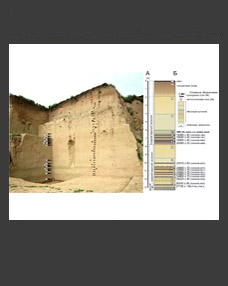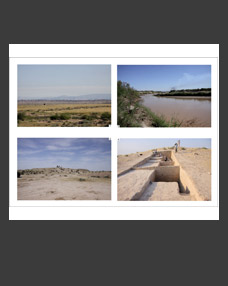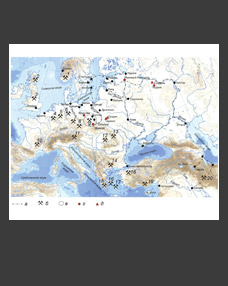Nataliya E. Zaretskaya1,*, Evgenia L. Lychagina2,3,**, Elena G. Lapteva4,***, Svetlana S. Trofimova4,****, Aleksey V. Chernov5,*****
1Institute of Geography RAS, Moscow, Russia
2Perm State Humanitarian Pedagogical University, Perm, Russia
3Perm State University, Perm, Russia
4Institute of Plant and Animal Ecology, Ural Branch of the RAS, Ekaterinburg, Russia
5Moscow Lomonosov State University, Russia
*E-mail: n_zaretskaya@inbox.ru
**E-mail: LychaginaE@mail.ru
***E-mail: lapteva@ipae.uran.ru
****E-mail: svetlana.trofimova@ipae.uran.ru
*****E-mail: Alexey.chernov@inbox.ru
Keywords: the Upper Kama basin, the Holocene, the Mesolithic, the Neolithic, the Chalcolithic, the Middle Ages, paleoecology, interdisciplinary studies.
In the Middle Holocene, subtaiga-type mixed forests developed. The middle Atlantic climatic optimum coincides with the wide spread of Neolithic sites located along the edges of the terrace on the Kama bank or on its bay. The principle occupations of the population were hunting and various ways of fishing. About 4200 cal. BP, a global cooling is recorded on the border of the Middle and Late Holocene, characterized by arid conditions. At that time, the banks of the Kama were inhabited by representatives of the Garino Chalcolithic culture. The sites were located on low surfaces near the water, which was caused by a decrease in the flow of the river. Fishing dominated among the economic activities of the population. In the second half of the 1st millennium AD a medieval population appeared in the region, whose sites were confined to rivers and streams f lowing into Lake Chashkinskoye. Economic activities included farming and husbandry, while hunting and fishing played a secondary role.
DOI: 10.31857/S086960630008253-7







